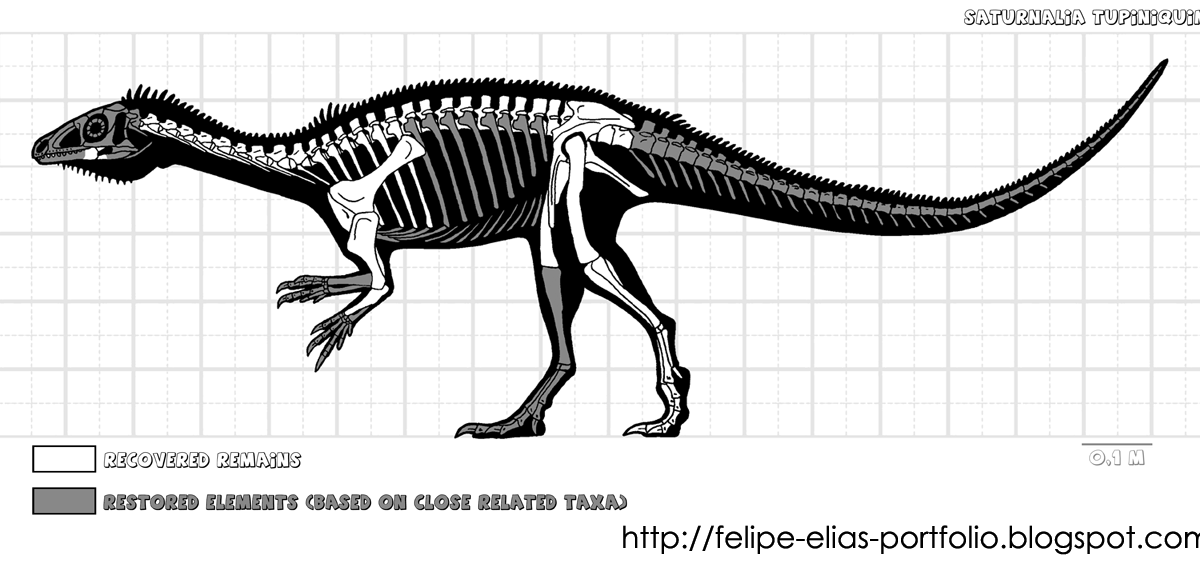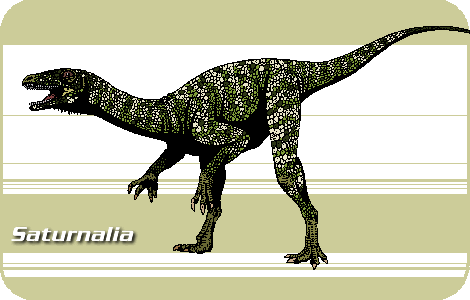

The primitive nature of Saturnalia, combined with its mixture of sauropodomorph and theropod characteristics, has made it difficult to classify. Discover more about Discovery and naming related topics The specific name is derived from Portuguese and Guarani word meaning native. The generic name is derived from Saturnalia, Latin for "Carnival", in reference to the discovery of the paratypes during the feasting period. Benton in 1999 and the type species is Saturnalia tupiniquim. Langer, Fernando Abdala, Martha Richter, Michael J.

A U→Pb ( Uranium decay) dating found that the Santa Maria Formation dated around 233.23 million years ago, putting it 1.5 million years older than the Ischigualasto Formation, and making the two formations approximately equal as the earliest dinosaur localities. It probably grew to about 1.5 meters (5 ft) long and 4 kilograms (8.8 lb). It is one of the oldest true dinosaurs yet found. A partial femur from the Carnian Pebbly Arkose Formation of Zimbabwe has been speculated to belong to the genus. All specimens were collected in the "Wald-Sanga" (also known as "Sanga do Mato") locality from the Alemoa Member of the Santa Maria Formation (Rosário do Sul Group), dating to the Carnian faunal stage of the early Late Triassic, about 228 million years ago. The two paratypes are MCP 3845-PV, partial skeleton including natural cast of partial mandible with teeth and some postcranial remains, and MCP 3846-PV, partial skeleton including postcranial remains. The holotype, MCP 3844-PV, a well-preserved semi- articulated postcranial skeleton, was discovered in mid-summer at Sanga da Alemoa, Rio Grande do Sul, in Brazil, in the geopark of Paleorrota.

Saturnalia was originally named on the basis of three partial skeletons.


 0 kommentar(er)
0 kommentar(er)
